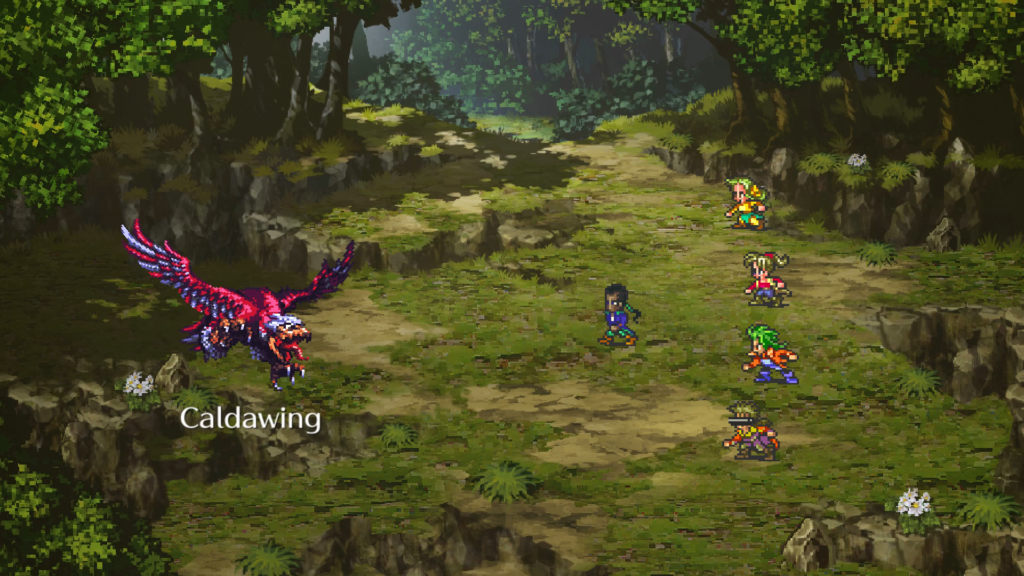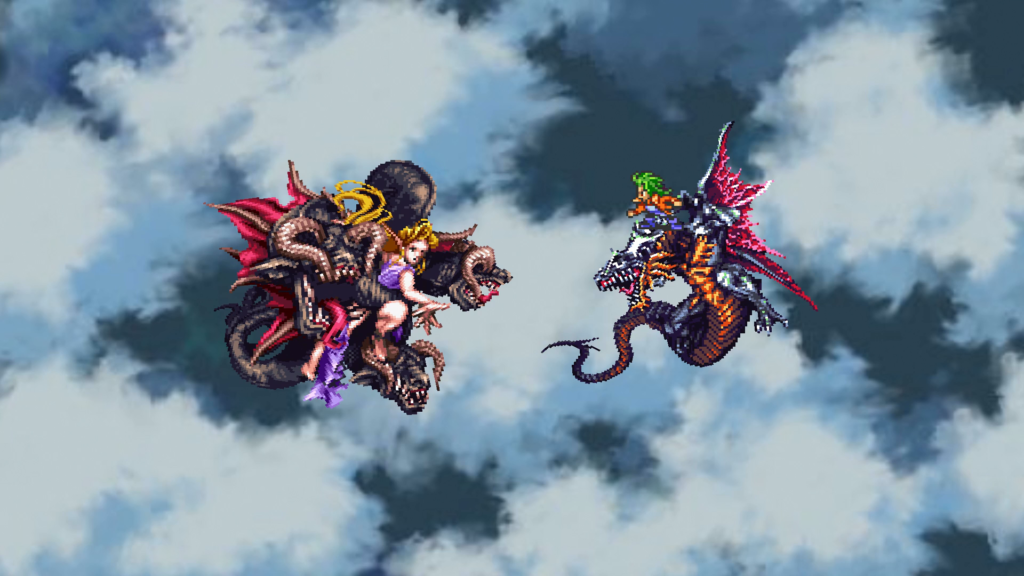If you had asked me a handful of years ago which Squaresoft titles would get a remaster or a remake, Romancing SaGa 3 wouldn’t probably be high on the list. Originally released in 1995 for the Super Famicom, an English version was never announced, leaving a much younger me to poke around with a fan-translated ROM. Since the poorly-received Unlimited SaGa on PlayStation 2, the series has been dormant – at least to non-Japanese readers. So it seemed unlikely that an ancient game that had no previous localization would get a shot, right? Glad to be wrong.
In recent years, we’ve seen a rebirth of Square Enix’s most overlooked RPG series. Romancing SaGa 2 and 3 are now fully translated and on new platforms with a fresh coat of paint, and SaGa Scarlet Grace: Ambitions is no longer held captive on PlayStation Vita. (More on that game soon.) What a time, folks!
Alright, on to the game itself. Odds are, you may be a Final Fantasy fan that hasn’t dabbled much in the SaGa series, but have admired it from a distance thinking: “a nice classic turn-based RPG with a look similar to FF V and VI – I might try that out some day!” Well, there’s a few things you’ll probably want to know if you’re coming in from this angle.
At the start of the game you will pick a single protagonist from four male and four female protagonists. The story and perspective of the game will change slightly depending on who your choose, so you can really go with anyone who has cursory appeal. After completing an introductory chapter, the game will open up in a way Final Fantasy games of the time don’t.
In order to advance the story, you’ll need to do more than walk from point A to B activating sequential cut-scenes. While the threat of an existential calamity looms, there’s a lot going on in Romancing SaGa 3’s world. Petty wars still need to be fought, ravenous beasts to be culled, business to be conducted. You can set about it in almost any order you want, but it’ll involve gathering information from NPCs and exploring dungeons. The main thrust will be defeating the four Sinistrals around the world to advance the main plot. Recruit-able characters will come and go (you’ll have the option to find a ton), so there isn’t much of a focus on character development. That being said, this remake adds additional scenarios for many characters that can be found in the Phantom Maze – a new optional dungeon. There’s still not too much going on here, but it’s a neat add.
What’s constructed is a world that begs to be explored and dissected, but that doesn’t come without risk or error. Some quests may resolve unceremoniously depending on the choices you make. One quest that had me exploring a rat-infested cave had a more interesting conclusion when I didn’t complete it as efficiently as possible. Another quest had me try to resolve a conflict between fire and water-magic users that ended with the complete abandonment of their town. Diving deep into a dungeon and encountering tougher and tougher ranks of monsters only to realize I wasn’t quite ready for the innermost challenges – these are the sorts of things you’ll encounter in this kind of game. One that isn’t hesitate to lay a few traps here and there. You’ll encounter a business mini-game that’ll likely fly way over your head on the first try unless you devote the time – something I didn’t try in earnest until my third playthrough thanks to the New Game Plus option the remake adds. (Digging up positively ancient websites for guides helped too.) It’s a game where you’ll get lost, not sure what to do or tackle next. If the thought of this intrigues rather than infuriates, this game will be up your alley. The remake has provided a nifty adventure log that chronicles what’s happened so far, so returning after a few days absence isn’t completely disorienting.
Combat in SaGa games is derivative of Final Fantasy II‘s system, the one people like to dunk on because you can easily abuse by setting your characters to attack themselves, thereby raising maximum HP levels easily. It was a system I thought was captivating in how it eschewed levels and experience and jobs in favor of a system where you could build characters in whatever way you wanted based on what tasks they performed in battle. In the Romancing SaGa series this has been refined so that such a broken strategy isn’t possible, but retains that sense of building characters how you like, rather than through a blueprint you feed experience points. Formations also add another layer to combat, including Commander Mode, which allows you to pick a strategy instead of trudging through individual commands on each turn – it feels ahead of its time. New abilities are learned almost at random via what’s now called the “Glimmer” system, and it’s fun to roll the dice and see what you get.

One of the most enjoyable aspects of Romancing SaGa 3’s battle system is that it places more value in random encounters. In most other turn-based RPGs of this style, these encounters are more about conserving your resources until a difficult encounter. While some of that’s present here with Skill Points (SP) and Magic Points (MP), the game will heal your health to full between battles. It resolves excessive post-battle menu healing and allows the moment-to-moment to be tuned to a higher difficulty. With the exception of bosses, fleeing from battle is instant and guaranteed, so you can really feel out what fights you feel you’re ready for. It’s surprisingly flexible while keeping things engaging. Some of my best moments with the game were fleeing from a mini-boss several times before giving it one last go to clinch a clear.
Square Enix and ArtePiazza have done a good job bringing the SNES-style graphics to an HD format. While there are noticeable tile seams here and there, it’s nowhere near as bad as some of the Final Fantasy phone ports belonging to the same era. A mote of wisdom has kept the character sprites as they were in the original, rather than enlarging, then smoothing them out. Animation has also been added to boss sprites, which gives the encounters a little more menace. The menus and interface aren’t great – they’re clearly how they are to accommodate smartphones, so it would have been nice to see something a bit less bulky – considering how the design of the interface was originally built to showcase the beautiful battle backgrounds. Kenji Ito’s soundtrack is untouched, and hits its high points in tense boss encounters such as “Four Noble Devils.”
Verdict
Romancing SaGa 3 is a game that shows you that Squaresoft was capable of delivering more than one style of RPG, even in bygone eras. While it didn’t get as much spotlight as its contemporaries, Romancing SaGa 3 shows a level of craft that earned Squaresoft their legacy. This remake does an honorable job bringing this game up to date with some tweaks and cosmetic additions, and doesn’t gets in the way of what make the original so appealing. While its mechanics may be dated and frustrating to some, others will appreciate an open structure and the ability to persist through failure. I would definitely recommend this title to anyone who appreciates Squaresoft’s 16-bit era and loves cracking open a game and its mechanics for fun.
Romancing SaGa 3 is now available on PlayStation 4, Xbox One, Nintendo Switch, Windows 10, Steam, iOS, and Android.
Disclaimer: Review code (PlayStation 4) was provided to Nova Crystallis by the publisher, Square Enix.

Recent Comments